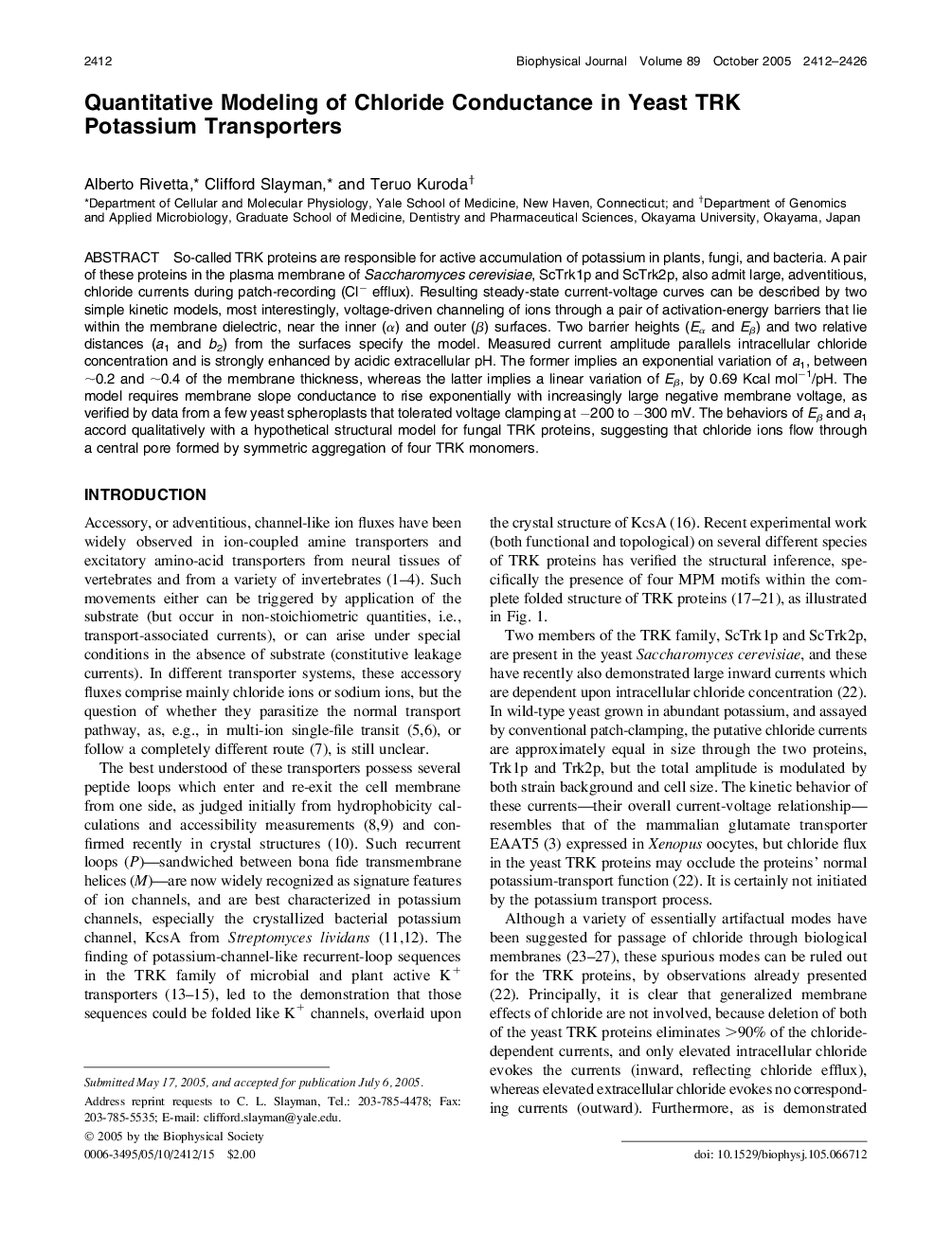| کد مقاله | کد نشریه | سال انتشار | مقاله انگلیسی | نسخه تمام متن |
|---|---|---|---|---|
| 1959003 | 1057924 | 2005 | 15 صفحه PDF | دانلود رایگان |

So-called TRK proteins are responsible for active accumulation of potassium in plants, fungi, and bacteria. A pair of these proteins in the plasma membrane of Saccharomyces cerevisiae, ScTrk1p and ScTrk2p, also admit large, adventitious, chloride currents during patch-recording (Cl− efflux). Resulting steady-state current-voltage curves can be described by two simple kinetic models, most interestingly, voltage-driven channeling of ions through a pair of activation-energy barriers that lie within the membrane dielectric, near the inner (α) and outer (β) surfaces. Two barrier heights (Eα and Eβ) and two relative distances (a1 and b2) from the surfaces specify the model. Measured current amplitude parallels intracellular chloride concentration and is strongly enhanced by acidic extracellular pH. The former implies an exponential variation of a1, between ∼0.2 and ∼0.4 of the membrane thickness, whereas the latter implies a linear variation of Eβ, by 0.69 Kcal mol−1/pH. The model requires membrane slope conductance to rise exponentially with increasingly large negative membrane voltage, as verified by data from a few yeast spheroplasts that tolerated voltage clamping at −200 to −300 mV. The behaviors of Eβ and a1 accord qualitatively with a hypothetical structural model for fungal TRK proteins, suggesting that chloride ions flow through a central pore formed by symmetric aggregation of four TRK monomers.
Journal: - Volume 89, Issue 4, October 2005, Pages 2412–2426